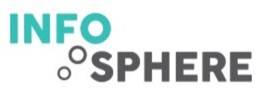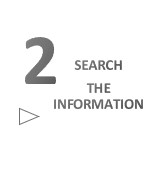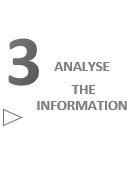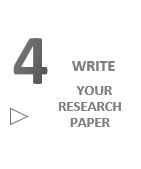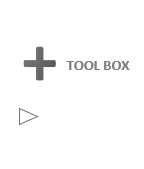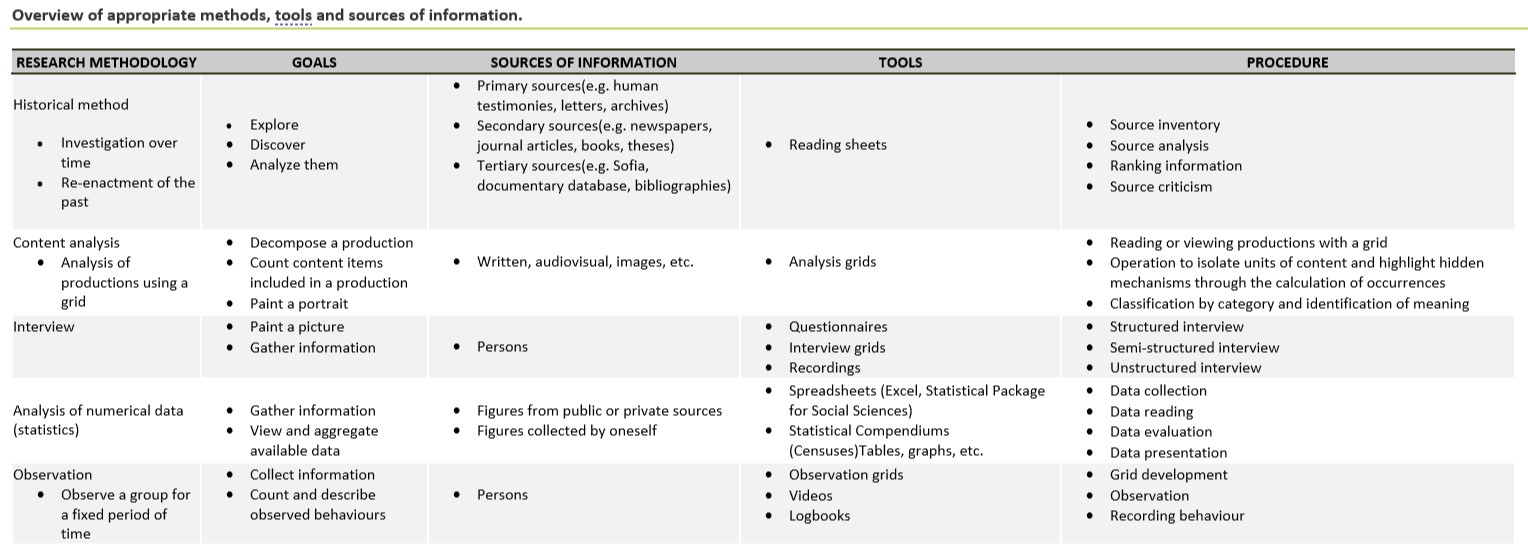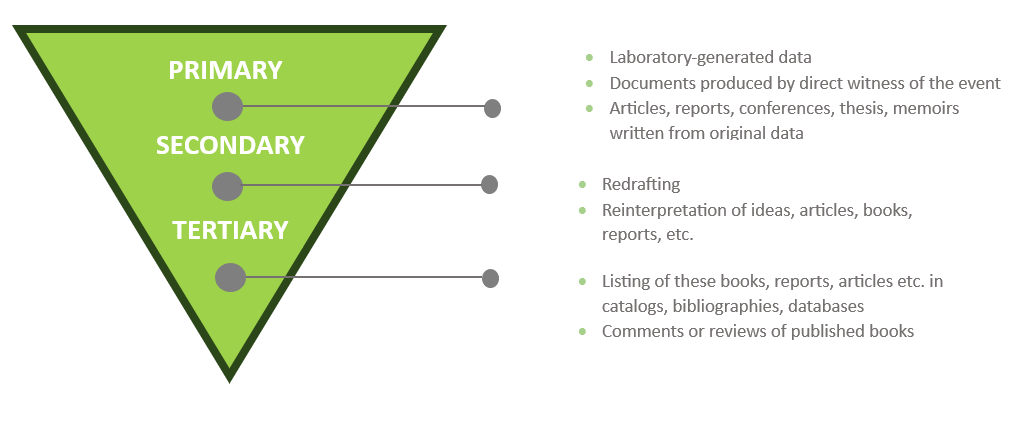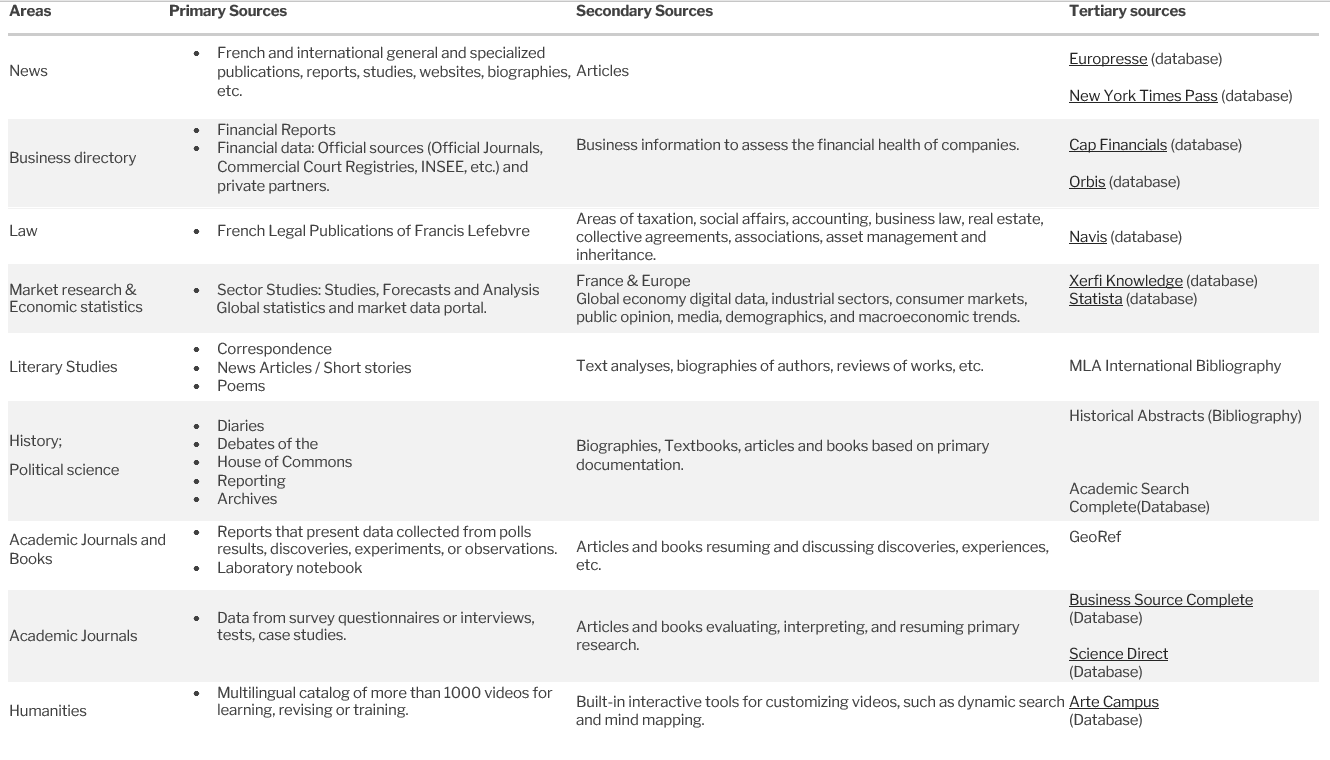Depending on the type of academic work required and the time allowed, it is recommended to assess the degree of depth that the literature search must reach.
 Objectives
Objectives
· Differentiate the types of work offered.
· Define the documentary needs, on the basis of this work.
· Judge the nature of the information needed.
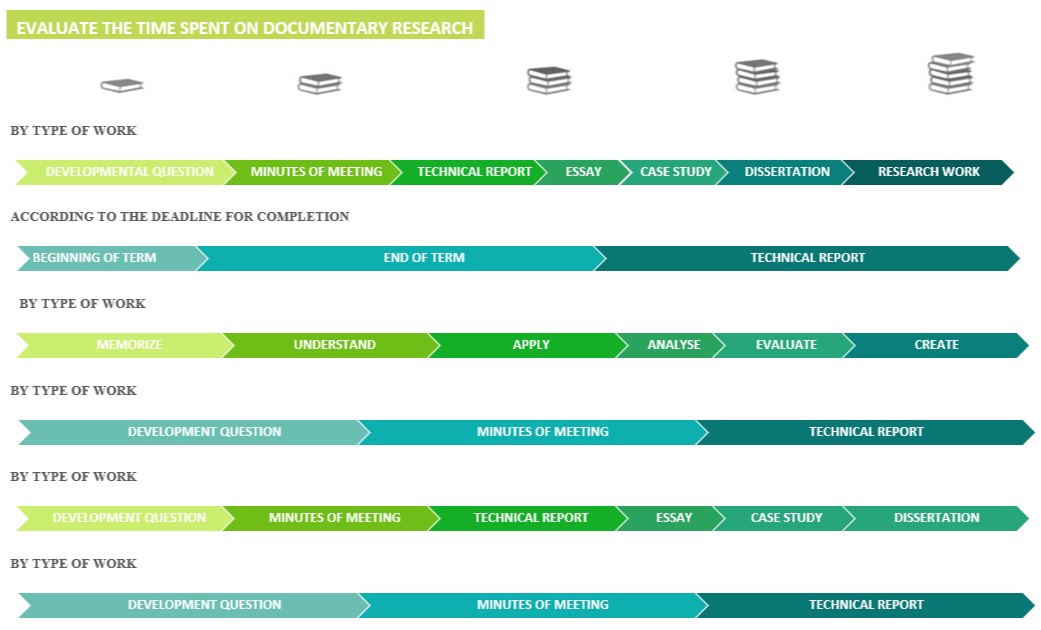
![]()
Development question
Exam to do in class, or homework, consisting of a few paragraphs or several pages.
Nature of information: Course notes, recommended texts, clarification of concepts (dictionaries, encyclopedias).
Review (informative or critical)
Description as faithful as possible of a reading, a fact, an event.
Nature of information: Author's book, other previously published reviews, documents allowing the work or author to be placed in their social and literary context (biographies, encyclopedias).
Technical report
A structured report in which facts or observations gathered during experiments, field trips, internships or investigations are reported.
Nature of information: General works on the discipline, encyclopedias, manuals / handbooks.
Test
Free text that allows you to express your opinions in a coherent and organized way without dealing with the subject exhaustively.
Nature of information: Variety of documents to feed his reflection.
Case Study
Systematic analysis of a situation in order to find solutions and solve a problem.
Nature of information: A variety of documents that relate the facts that help and provide a picture of the situation and study and make the correct diagnosis.
Dissertation (explanatory or argumentative)
Text that questions, doubts, brings a different or contrary vision, helps to clarify the pros or cons, the advantages and disadvantages (Variety of documents)
Nature of information: A variety of documents containing facts and ideas that describe, demonstrate, explain the subject or phenomenon.
Research work
Long text that usually involves developing a thesis and proposing arguments that support it. The goal is to discover new relationships between facts.
Nature of information: A variety of documents providing facts and ideas to define the problem and support its arguments.
![]()
To clearly differentiate between primary, secondary and tertiary sources of information, consult the page Categories of information sources Complement
Infosphère / https://infosphere.uqam.ca

